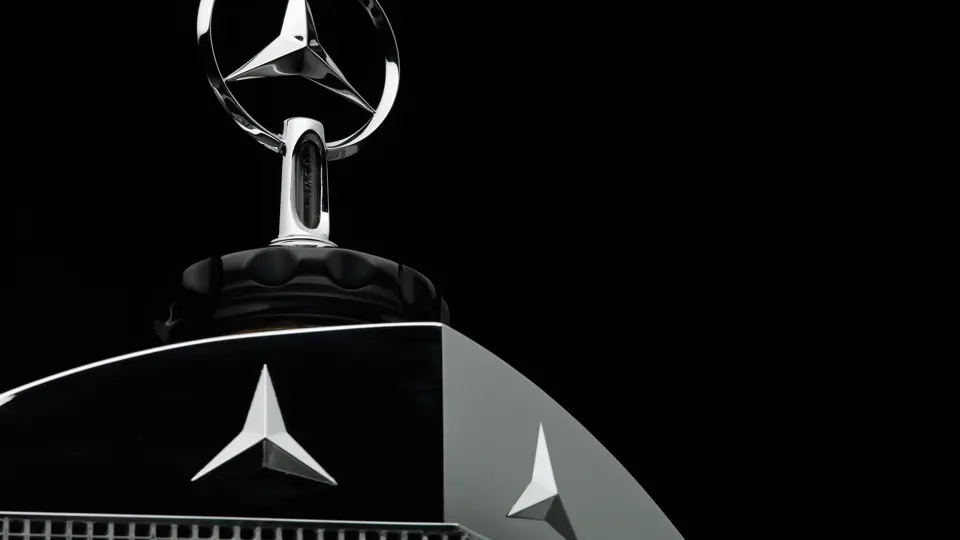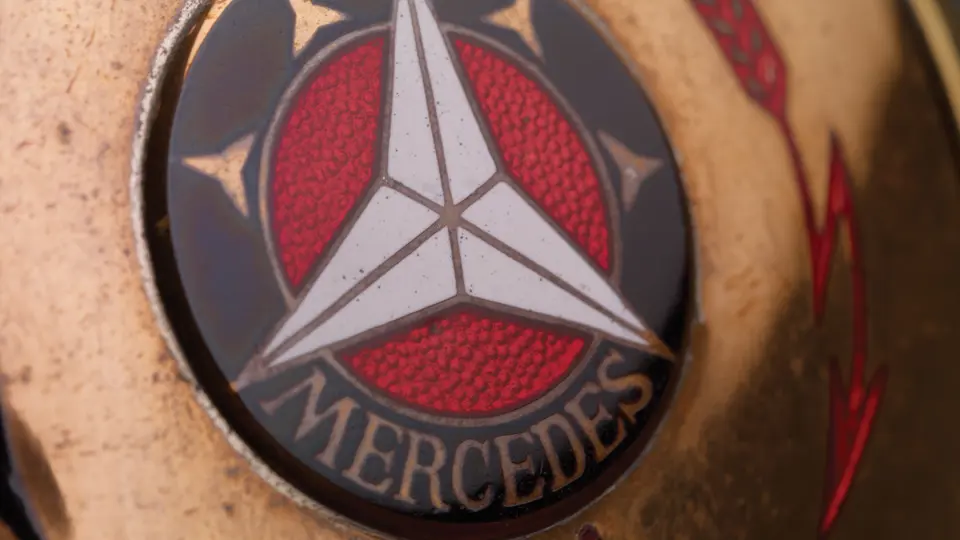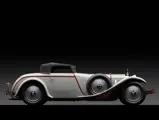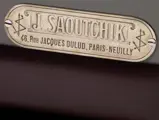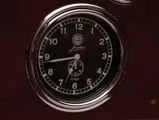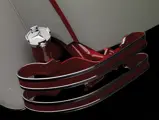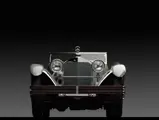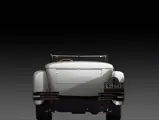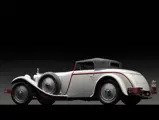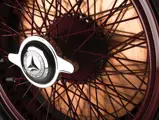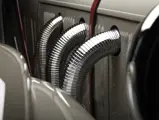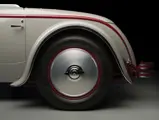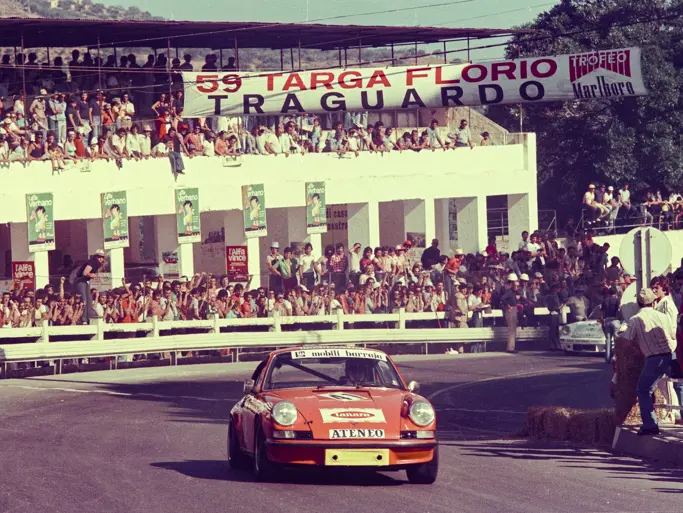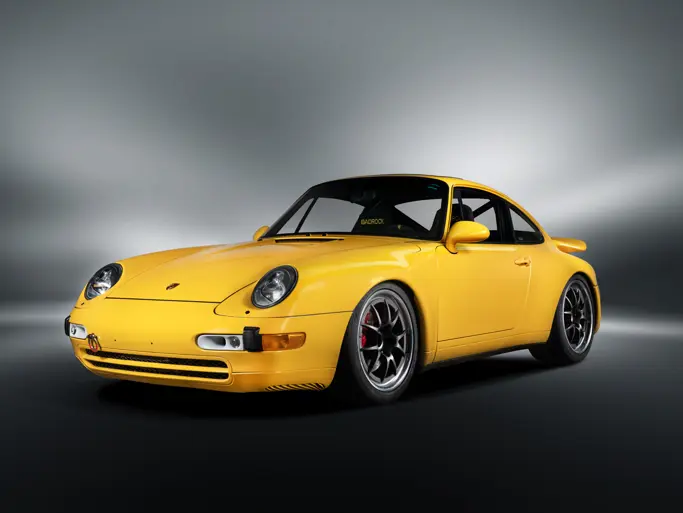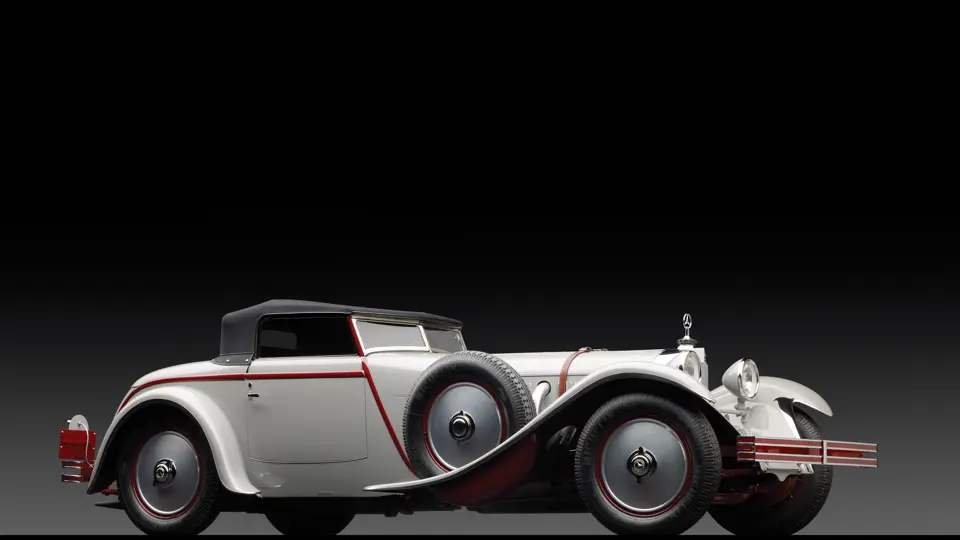
1928 Mercedes-Benz 680S Torpedo Roadster by Saoutchik
{{lr.item.text}}
$8,250,000 USD | Sold
{{bidding.lot.reserveStatusFormatted}}
- The 2012 Pebble Beach Best of Show winner
- Meticulous restoration by Paul Russell and Company
- Displayed at the 1929 New York Auto Salon
- One of only three short-windshield examples built and the only known survivor
26/120/180 hp, 6,789 cc single-overhead cam six-cylinder engine with dual-carburetor Roots-type supercharger, four-speed manual transmission, live axles with semi-elliptic leaf springs, and four-wheel mechanical drum brakes. Wheelbase: 134 in.
In an era when the Ford Model T was selling one million units per year on average, there was an alternate world of exclusive automobiles. Born out of the age of custom horse-drawn coaches, it was one of high fashion and fine engineering. One in which the elite could custom order the car of their dreams with a bevy of fine materials, many of which were sourced from colonies around the world. Many of these cars would go on to be exhibited by their owners at famed Concours d’ Elegance. These events were not only a showcase for the automobiles, but also for the high fashion of the day.
The Mercedes-Benz Typ S
Germany’s post-World War I depression necessitated a merger between Daimler and Benz, a process that began in 1925 and was formally consummated on June 26, 1926; the joined companies’ product lines, manufacturing, and management were integrated and rationalized. Most importantly, the marques’ competition in racing ended, and the combined companies’ performance-development efforts were placed squarely behind the Mercedes, resulting in some of the most exciting, famous, and successful automobiles ever built. The immediate result of the renewed focus and the concentration of the engineering talents of Dr. Ferdinand Porsche, Hans Nibel, and Fritz Nallinger was the Mercedes-Benz Typ S. Developed as a successor to the 6,246-cubic centimeter Model K, it was an automobile that would forever establish the credentials of Mercedes-Benz at the pinnacle of high performance luxury automobiles. As the post-war recession faded, it was succeeded by an era of prosperity and a new social freedom, the Jazz Age. The Typ S, developed as a successor to the Model K, was vigorous, powerful, vibrant, and
purposeful. It became a signature of the times and the pinnacle of aspirations that, in the Roaring Twenties, seemed accessible to all.
Displacing 6,789 cubic centimeters, the all-new Typ S engine had larger valves, dual carburetors, a modestly increased compression ratio, and a larger supercharger that delivered 7 psi boost when engaged. Rated 26/120/180 horsepower, the numbers denoting the engine’s taxable, naturally-aspirated, and supercharged horsepower ratings, it owed little more than its single overhead camshaft and six cylinders to the earlier K and its predecessors. The design ingeniously
deals with one of the major problems of 1920s automobiles, flexible chassis. For the S, the Mercedes team designed a “unit” engine and transmission with rigid mounts, providing cross bracing and a jointed torque tube drive to the back axle. The massive powerplant contributed its own rigidity to the chassis structure, which was completely revised.
The frame rails now kicked up over both the front and rear axles, with semi-elliptic leaf springs at all corners. The radiator was lowered, making it barely higher than the massive engine, which was moved a foot to the rear for better weight distribution. Despite the refined, massive construction, the Typ S rolling chassis was 510 pounds lighter than the K. Further, the Typ S, with its seven-tier radiator, had a 3½-inch lower hood and a much sleeker profile than the later Typ SS model, which used a higher eight-tier radiator.
Fitted with streamlined, lightweight, two- and four-seat open coachwork from Sindelfingen and Europe’s finest coachbuilders, it was a sports car for select, successful owners who prized quality, flair, and performance above all else. It also was exclusive, with only 124 Typ S and 114 Typ SS built.
Carrosserie J. Saoutchik
This 1928 Mercedes-Benz 680S, complete with its low-slung torpedo roadster body by Carrosserie J. Saoutchik, of Paris, is a perfect example of coachbuilding of the late 1920s. It showcases some of the more exotic materials available to the coachbuilders of the day. The hides used to create the lizard skin interior were supplied by Alpina, a company that sourced products from the French colonies in Southeast Asia. The beautiful trim wood, known as Purpleheart, was also sourced out of the French colonies in South America.
The engineering of the Mercedes-Benz S chassis provided the perfect platform for Saoutchik’s rakish designs. Born Iakov Saoutchik in the Ukraine, he founded his eponymously named firm in 1906, in Neuilly-sur-Seine. A cabinet maker by trade, he quickly found success as a custom
coachbuilder. Establishing himself by creating stylish designs coupled with high-quality workmanship, he took many risks with design and materials. Nicknamed the “Viollet-le-Duc,” after a famously creative French architect, he was obsessed by form and often used brightwork appliqué to highlight the strong lines of his coachwork. His background as a cabinet maker is evidenced in the tight tolerances and body panel fits that can be seen on his creations. One of his favored design features, the disappearing top, provides an elegant and innovative solution to hide the convertible top.
Chassis 35949
Chassis 35949 was delivered to Carrosserie J. Saoutchik in August of 1928. Although the original kommission papers note the client as Mr. Charles Levine, it has always been said that it was his wife who actually placed the order. Ordered in Dove Grey, it sported a dark red lizard skin interior, a disappearing top, and striking German Silver trim on the fenders of its torpedo roadster body, which was described in period advertisements as “Avante-Garde,” a descriptor that certainly no one could argue with.
Mrs. Levine was the wife of Charles A. Levine, who had made his fortune recycling World War I surplus brass and was, by 1927, a millionaire. Levine formed the Columbia Aircraft Company with Giuseppe Mario Bellanca and hired several pilots to attempt various publicity records to promote the company. The Orteig Prize was one, awarded to the first person to fly nonstop from New York to Paris. Levine, wanting to be a part of this historic flight, displaced the co-pilot in favor of himself. The co-pilot in turn sued Levine to have his spot reinstated. Levine was successful in keeping his spot on the plane, but the decision was made hours after Charles Lindbergh, in the Spirit of St. Louis, had departed Roosevelt Field for his successful flight to Paris.
Levine then announced his intention to fly from America to Germany and carry a passenger. The pilot, Clarence Chamberlain, and Levine set off on June 4, 1927, on their flight to Berlin. They landed just 100 miles shy of their goal in a field at Eisieben, Germany. Levine continued various record attempts for years, until, after a series of bad investments in the stock market, the federal government sued him for half a million dollars in back taxes.
Any one of these factors could have been the reason for the couple not taking delivery of their custom-built Mercedes at the showroom in New York City. Mercedes-Benz New York suddenly had a very expensive custom-ordered car in its showroom with no buyer. They took the opportunity to use the car as a part of their display at the 1929 New York Auto Salon. It was also featured in their advertisement in the 1929 Auto Salon edition of Motor magazine.
Bedford Family Ownership
Knowing that the Bedford family had previously purchased a Mercedes, the sales department contacted the young Standard Oil director, Frederick Henry Bedford Jr., regarding the special Mercedes they had available. They made him an attractive offer, and so began a course that would bring him to the acquaintance of his future wife, Miss Margaret Stewart.
According to her granddaughter, Ms. Muffie Murray, Margaret was dating an old family friend whom she found extremely boring. Margaret and the gentleman were attending a party in Ligonier, Pennsylvania, when she was introduced to Frederick Bedford. She told her granddaughter that she thought he was a lot of fun and a good dancer. When leaving the party, she spotted his car and “that was it.” He offered to give her a ride back to Pittsburgh; “quite a racy proposition for a lady back then,” she would later tell Muffie. She accepted the ride, and although her old friend tried to keep up, he was no match for the “speed demon” in the supercharged Mercedes. She recalled that they could see him fading behind in the distance. “After that,” she told her granddaughter, “there was no one else for me.”
Mr. Bedford was a director of the Standard Oil Company for 25 years, and he was also president of the Atlas Supply Company, which sold tires, batteries, and other accessories. In 1947, as president of Atlas, he and other company executives made a business tour of 11 Central and South American countries in a DC-4 christened the Atlas Sky Merchant. It was specially fitted to display automotive and aviation accessories. In 1948, the group made a world flight, covering 50,000 miles in 100 days and visiting 26 countries, a tour which was recognized by the National Aeronautic Association as the first global merchandising flight.
Mr. Bedford, who had made his home with Margaret in Greens Farms, Connecticut, suffered an untimely death while on a business trip in 1952, at the age of 61. Mrs. Bedford was so heartbroken by her husband’s passing that she parked the Mercedes in the garage and did not use it again.
In 1980, for her grandmother’s birthday, Muffie baked a cake in the shape of the car and also wrote a poem about it. Having grown up with the courtship story surrounding the Mercedes, she had always been fond of it. Mrs. Bedford loved the Mercedes-shaped cake so much that she refused to cut it. She later surprised her granddaughter with the news that she was going to have the car restored for her, and a friend of the family was tasked with managing the restoration. Several shops were contacted to offer bids; one of these was Paul Russell’s Gullwing Service Company. When Russell inspected the car in Greens Farms, it still had its original lizard skin interior and license plates, which had been renewed for 1953 before Mr. Bedford passed. Photographs taken during his inspection in 1980 would later provide valuable information to the current restoration team. During the restoration, which was awarded to Gus Reuter, the original lizard skin was changed to red leather and the wheel discs were omitted.
The car was exhibited at an AACA event in 1982, where it won a National First Prize. Mercedes-Benz then selected the car to be featured during its centennial celebrations in 1986. It was at these events that James S. Rockefeller, founding chairman of the Owls Head Transportation Museum in Maine, spotted the car. He was intrigued by the connection the car had to his family, the founders of Standard Oil. He asked for the loan of the car to the Owls Head Museum, and it would remain there as a prized exhibit for the next two decades.
After many years, the Bedford family decided to sell the car, and it was sold for only the second time in its life in 2006, with only 31,000 miles on its odometer. It was purchased by a well-known luxury home builder, philanthropist, and collector from Michigan and California, before passing into the current ownership in early 2008.
The current owners had an ongoing relationship with Paul Russell and Company, and a final decision to commission a full restoration with the firm was made after Russell and his team presented a module on the challenges of restoring a coachbuilt car at the 2010 Symposium on Connoisseurship and the Collectible Car, sponsored by the Revs Institute and the Collier Collection, in Naples, Florida.
The car arrived at Russell’s Massachusetts facility in April of 2010, and its condition was thoroughly reviewed by the staff before a full frame-off restoration began. In-depth inspection and research revealed the impressive originality of the car. Having had single-family ownership for seven and a half decades ensured that very few parts of the car had ever been replaced. All chassis and drivetrain components are properly numbered internally and externally, matching the kommission papers.
The coachwork was remarkably sound, and the Saoutchik job number is stamped all over the original wood framing and metal fittings. Having been stored in such favorable conditions for so many years, the wood frame underneath the metal skin remained preserved, and only a few pieces in the top well had to be replaced.
The engine required a complete overhaul, but the gearbox and the rear end required only routine rebuilds, with both units disassembled and any internal parts replaced as necessary. The delicate engine turning was also restored and is exceptional in appearance. It is found in the most seemingly unlikely places, including the cylinder head, carburetors, and even a panel under the metal lid for the convertible top. That this ornate treatment would be applied to a component not openly visible is only one representative example of the engineering and artistry employed in the construction of this Mercedes-Benz. Vast effort was expended to restore and retain various parts that could have been more easily remanufactured. The original and slightly worn sill plates engraved “Carrosserie J. Saoutchik” were painstakingly re-engraved rather than replaced. The same effort was put forth to retain the exquisite original exhaust sidepipes, which were carefully cleaned and replated. Another example arose due to the fact that the car had been in a minor accident at some point in its life, so one of the front fenders and its German Silver trim needed a small repair.
The trim, having been metallurgically analyzed, was found to be an 80/20 copper-nickel alloy, as opposed to the usual formulation of 60% copper, 20% nickel, and 20% zinc. Creating the proper alloy, critical to the exact color tone of the trim, turned out to be an unexpected challenge. All pieces were removed, straightened, metal finished in the correct alloy, and re-soldered in place.
Accordingly, all of the craft specialists at Paul Russell and Company painstakingly researched every detail. This included a trip to Germany to analyze two remaining original Saoutchik lizard interiors, research for original Saoutchik photographs and family history, as well as sourcing 760 new lizard hides from Southeast Asia. Each individual hide yielded two arch-shaped pieces, which were then sewn into strips to form the upholstery panels that adorn the seats, door panels, and a small lid that helps conceal the top. The location that each piece was cut from was deliberately chosen in order to ensure that the finished upholstery panels displayed consistency of grain and color tone.
The combination of the rich upholstery, lustrous nickel-plated hardware, and the glass-like finish of the wooden dash, door trim, and steering wheel results in a symphony of color and texture.
Nothing but the best execution was acceptable in the appearance, operation, and presentation of the car. The supreme quality of the restoration was recognized at last year’s Pebble Beach Concours d’Elegance, where the car was awarded 100 points before going on to claim the coveted Best of Show title. Additional accolades bestowed on the stunning Mercedes-Benz include Restoration of the Year at the 2012 International Historic Motoring Awards and, more recently, First in Class at the celebrated 2013 Concorso d’Eleganza Villa d’Este on the shores of Lake Como, Italy.
Now presented as exhaustively researched as it is restored, it is today just as it appeared in the sparkle of the lights of the New York Auto Salon. It captures the spirit of youth and beauty that Margaret Stewart brought into the world of a man and his car. It embodies the emotion of an automobile that became an heirloom and the thrill of a long-sought victory. There are few words to describe the feeling— there is only one unforgettable, irreplaceable automobile.






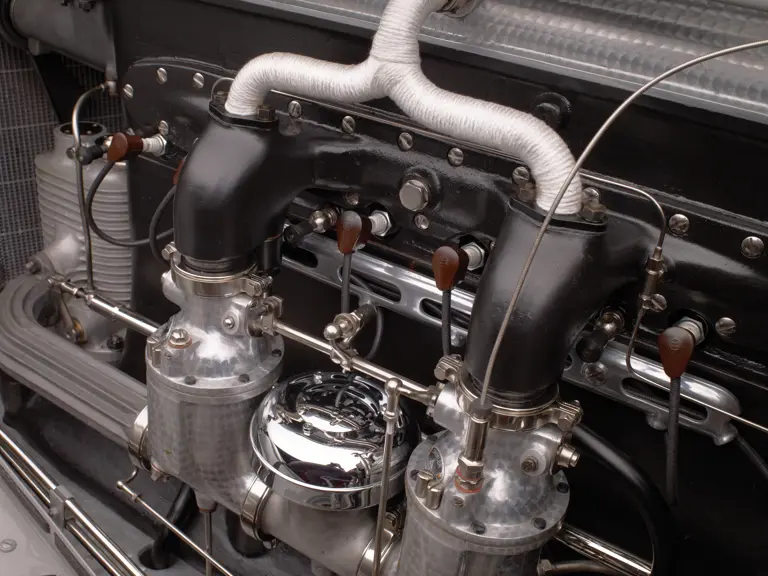

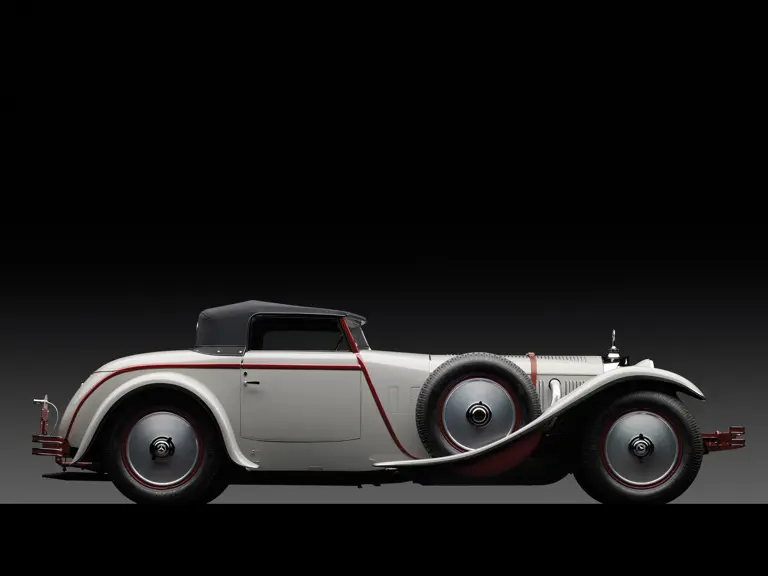
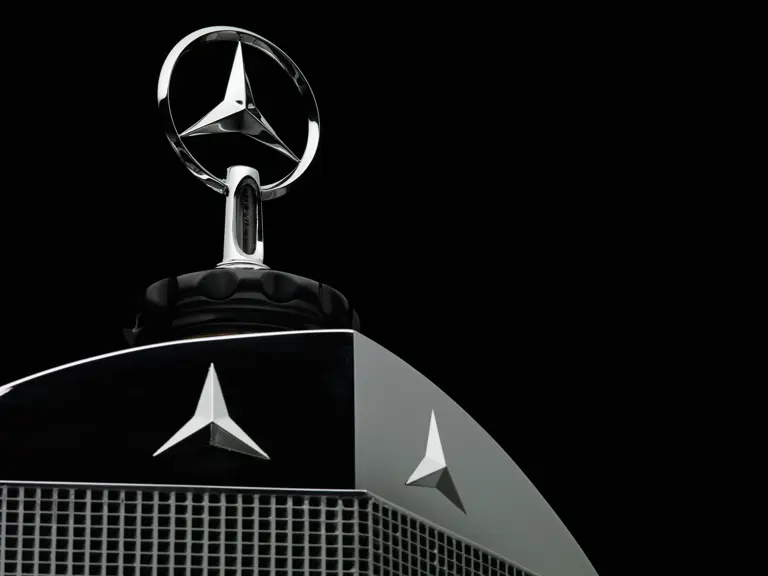
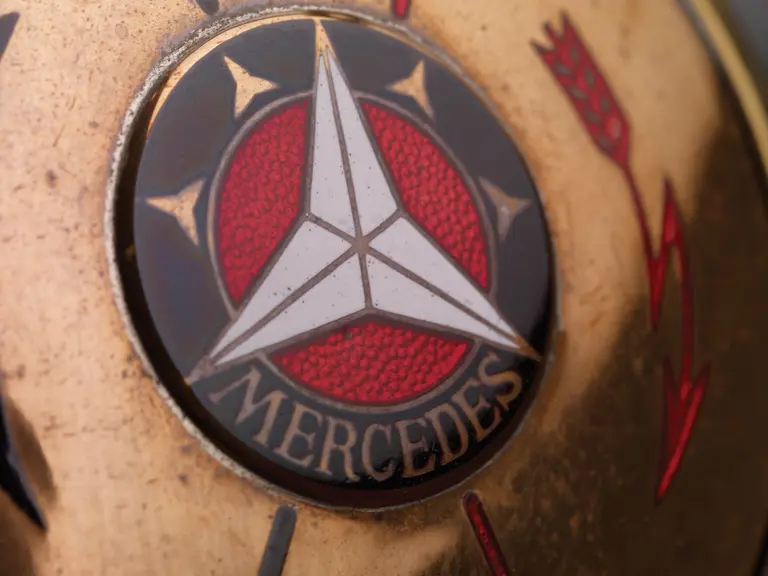
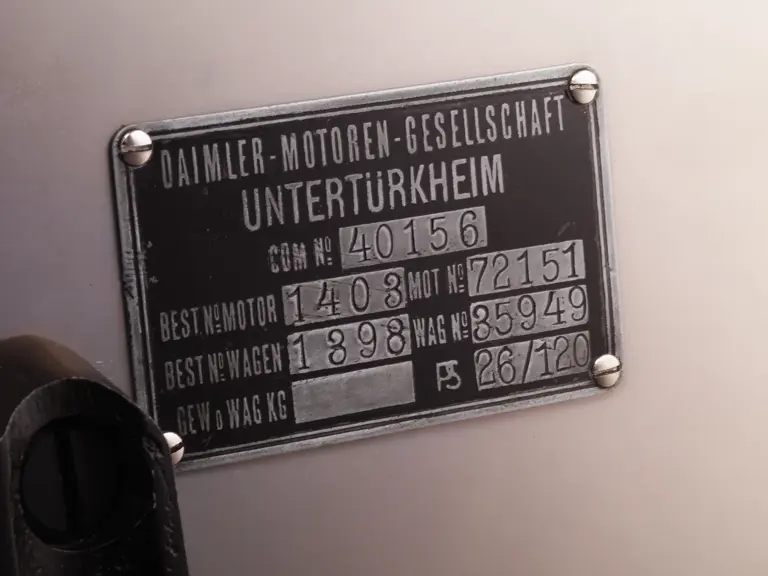
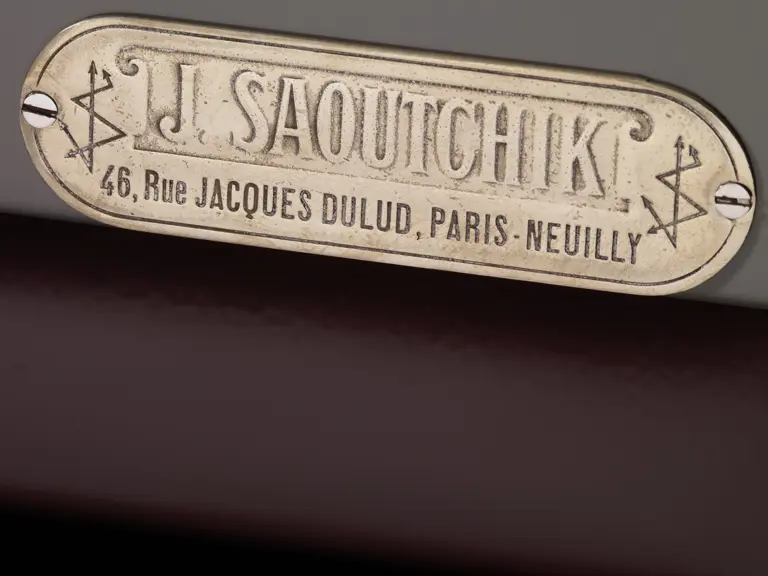

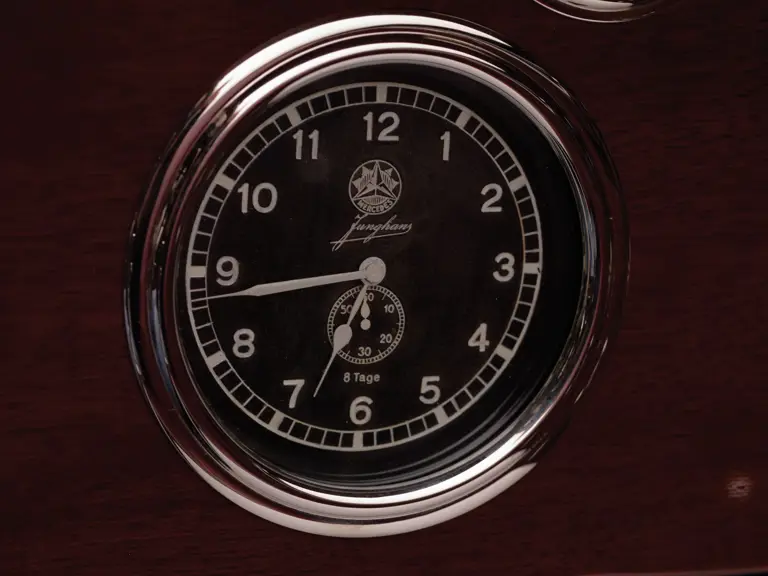


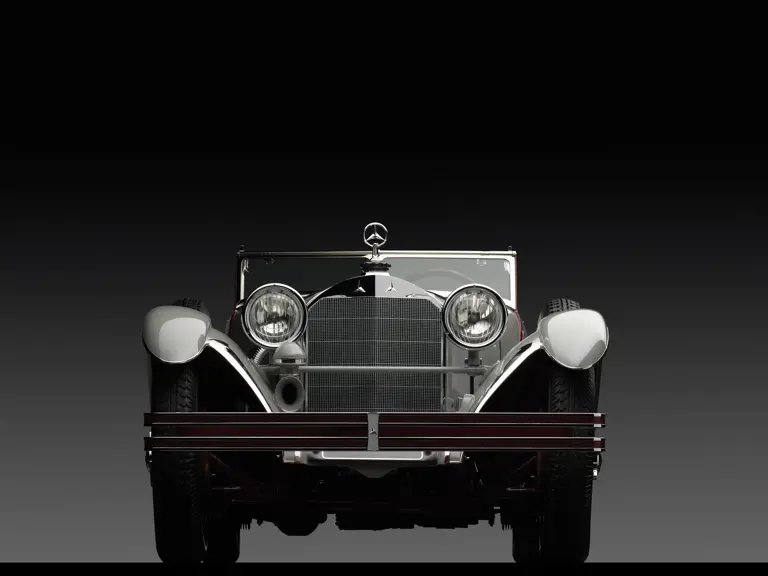
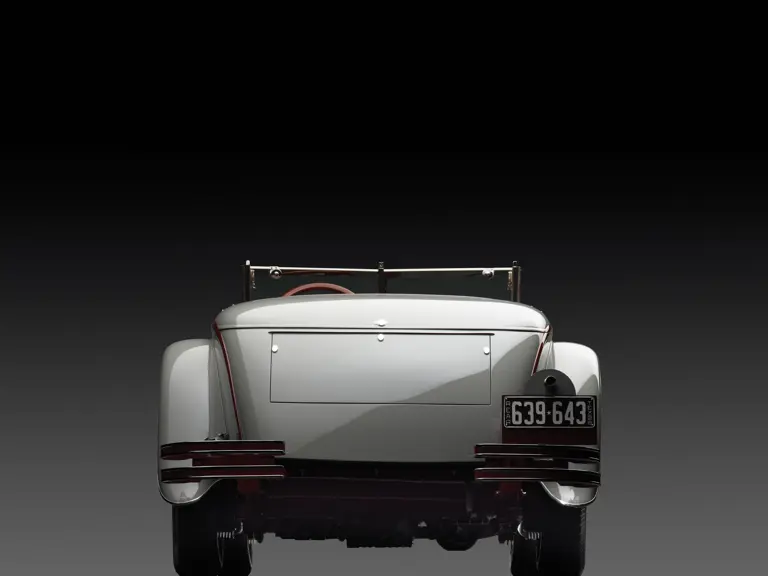
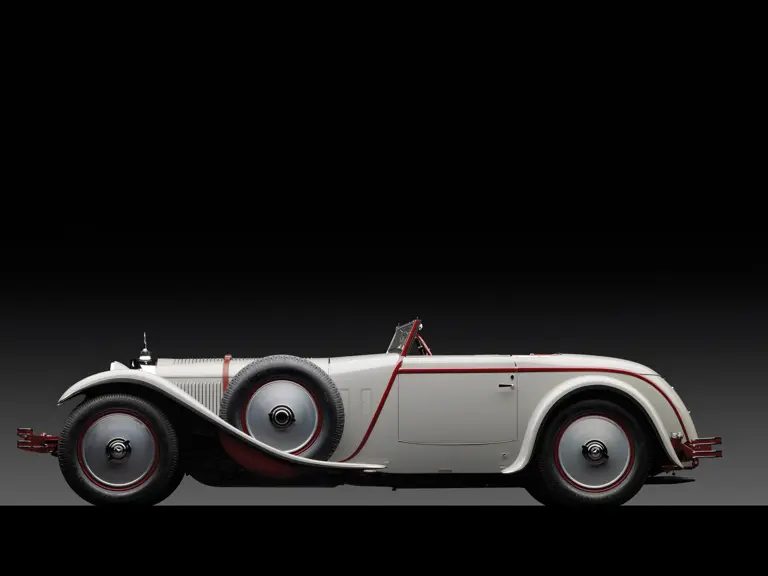
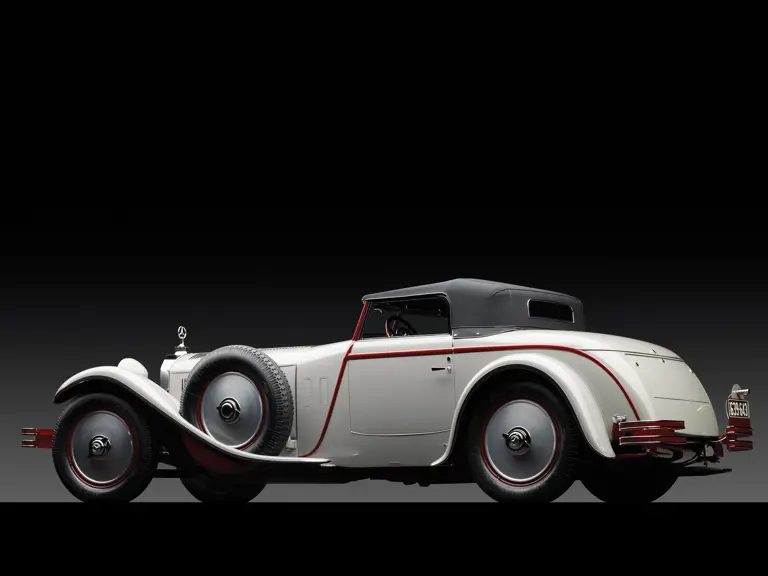
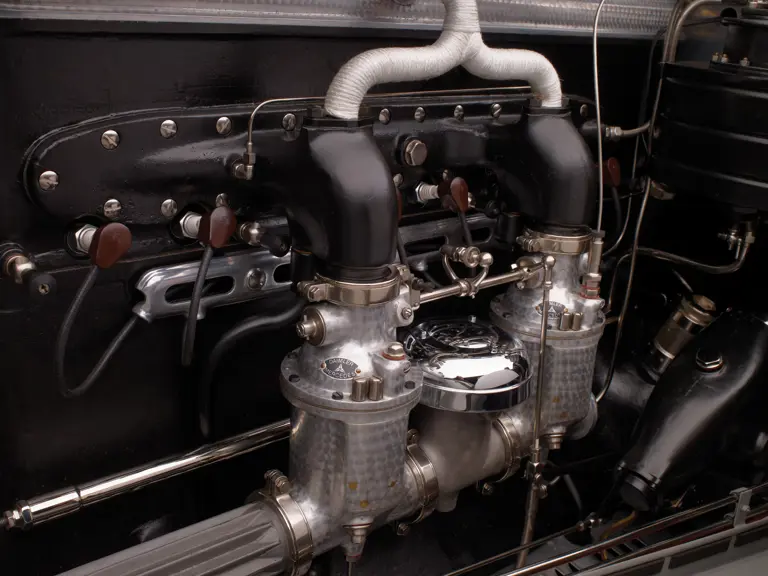

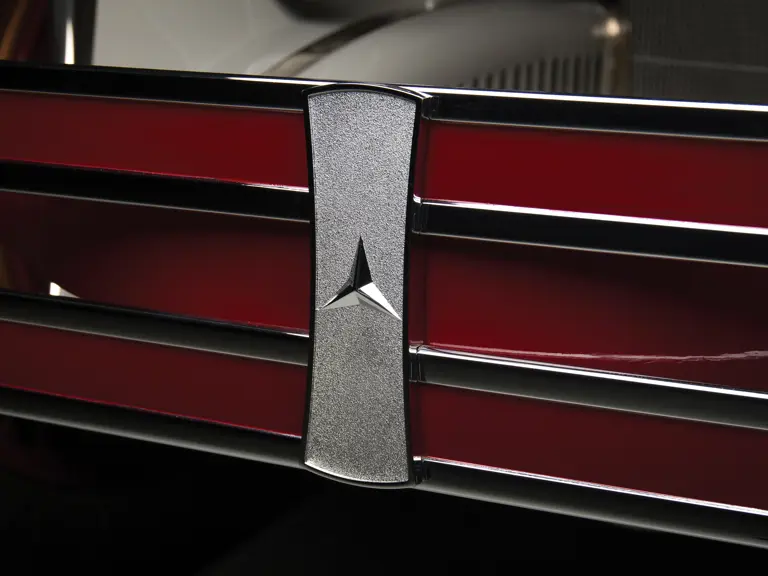


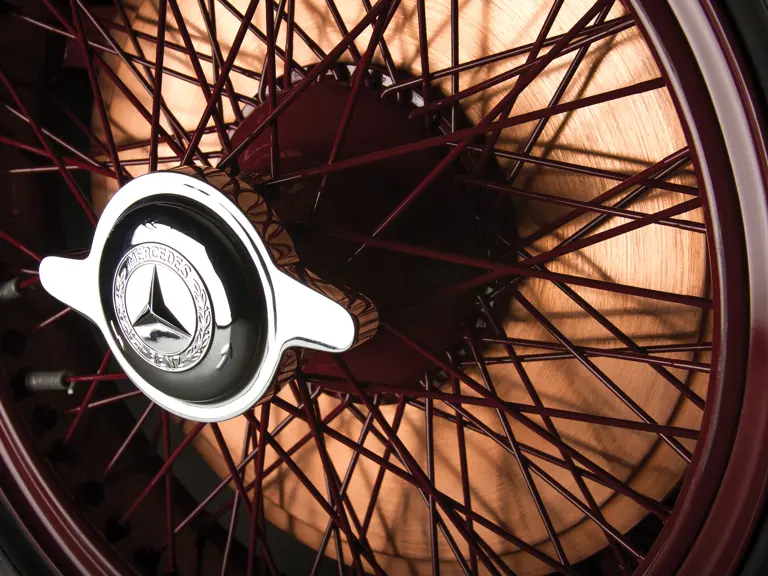

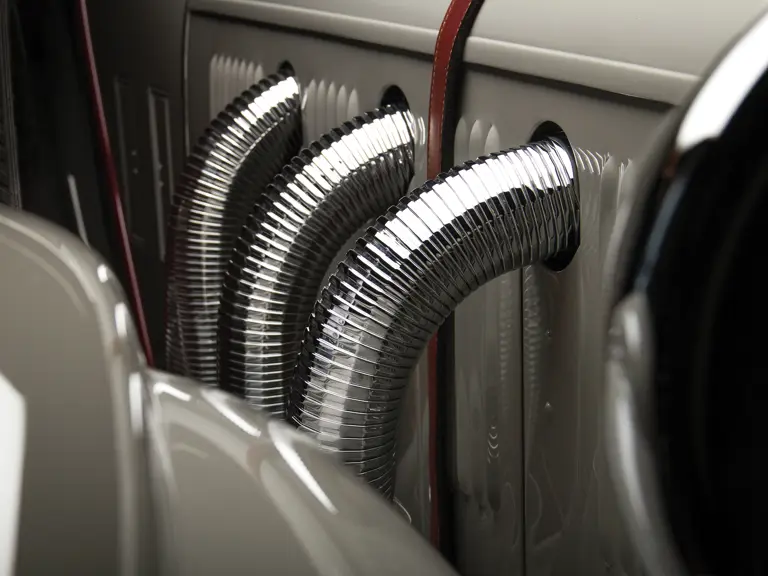
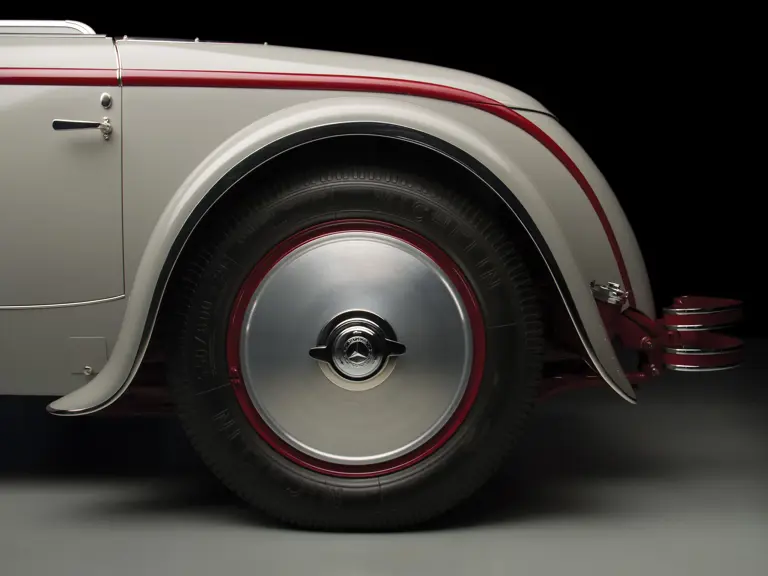
 | Monterey, California
| Monterey, California

